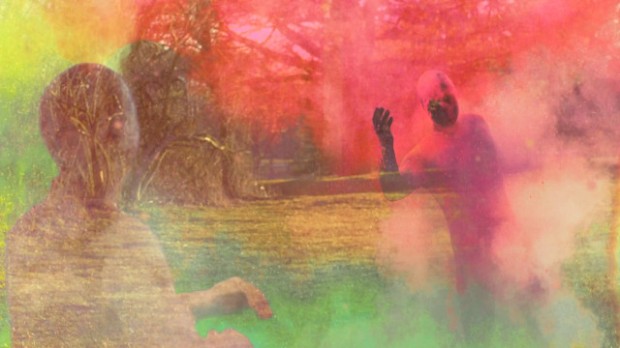News
“Salience”, the short film and the secrets of its making.
We are back! We hope you had a good vacation, and to make your return more bearable today I bring you an interesting short film by filmmaker Paul Trillo.
“Salience” takes us to enjoy a visual experience in a forest where invisible figures are being discovered thanks to the explosions of colored dust. Paul Trillo wanted to explore the theme of visibility, using the Phantom Miro camera (recording at 1500 fps) and working this effect in postproduction.
I’m sure many of you are wondering how they managed to do it. Fortunately a “Behind The Scenes” has also been published with comments about the recording and explanations about what was necessary to create this invisibility effect.
In addition, Paul Trillo delves a little deeper in an interview conducted by AbelCine, talking about the inspiration behind “Salience” and some of the challenges he and his crew had to face during filming.
Here you can see the original, but I also leave it translated into Spanish:
In the Behind The Scenes video you talk a bit about it, but tell us exactly why you wanted to use the Miro.
PT: The Miro appealed to me for many reasons. I think its main reason was that it’s completely easy to use, which sets it apart from the rest of the Phantom family. After a brief review of the camera, the camera is like an acquired habit…So for me, being able to shoot an image that is comparable to something from the Flex without an operator or a big headache was super exciting. I wouldn’t have ever imagined myself being able to operate a Phantom camera.
The size of the Miro also opens a lot of doors from a production and creative standpoint. We’ve been able to catch shots and get into camera locations quickly. Plus this camera just makes a lot more sense because of the forest location we chose and the size of our equipment.
What was the most challenging aspect of the production for you?
PT: I would say the most challenging aspect was having to load our DIT station onto a dolly (nicknamed the CLETUS 5000 DIT cart). We ended up controlling the Miro through the laptop so it had to be close to the camera all the time. Since we didn’t have the means to work, we would throw every shot onto the laptop; at first this slowed us down, however, it ended up being the only way to record everything in RAW.
Did you encounter any surprises while filming with the Miro?
PT: Joe Gabriel, the cinematographer, and I were very impressed with how well the camera captures in low light conditions. Even though we were outdoors, shooting at 1500 frames per second significantly reduces your lighting, especially at the end of the day. The Miro was very sensitive in these conditions. By shooting in RAW I was able to balance even the darkest shots, shot after sunset, with the shots that had been taken earlier in the day.
How long did it actually take you to shoot and finish post-production on the film?
Most of the shoot was done in one day and two half days before and after. On our first day we got snowed out so we spent most of the time getting familiar with the camera. It took about a day to transcode everything from RAW to ProRes and then about two weeks to put the first cut together. The final compositing took about a month and a half as I worked on it whenever I had free time. The sound design also took about a month.
Back in 2012, you submitted a treatment for our “Miro High-Speed Inspiration Challenge” that had some of these same themes – how did the project grow and evolve from this point?
PT: I’ve always known I wanted to do something that would create a contrast between an invisible figure and its background – separate something invisible from its background. I thought colored powder was a good organic way to reveal the human body. This underlying concept remained intact.
Like any production, things change and evolve over time. I wanted to allude to some kind of narrative without anything being too obvious. It became this relationship about two people, one who changes and one who is afraid of change. As we got into production, some elements of the story had to be cut so it changed once again. My goal was to create a visual experience, an intriguing illusion; so in that sense I’m happy with the end result.
If you liked this short film and you are interested in learning more about high speed recording, don’t hesitate to take a look at the High Speed Camera Course that will take place in October. Here you have all the information about the contents and the equipment list.


